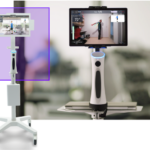Curious about the difference between a physical therapist and a chiropractor? Learn how each profession addresses pain and recovery differently, and why combining both can optimize your health.
When dealing with pain or recovering from an injury, you may wonder whether you should see a physical therapist or a chiropractor. Both professionals are highly skilled in managing pain and improving function, yet their methods and areas of expertise differ. Rather than viewing them as alternatives, many people find that combining physical therapy and chiropractic care can provide comprehensive relief and long-term benefits.
This article explores the key differences between physical therapists and chiropractors and explains how their unique approaches complement each other to optimize health and recovery.
What is a Physical Therapist?
Physical therapists (PTs) are licensed healthcare professionals who specialize in diagnosing and treating movement dysfunction, reducing pain, and restoring physical function through exercise, manual therapy, and education. Physical therapy is a highly evidence-based practice that emphasizes long-term recovery and improving quality of life.
Here’s what physical therapy focuses on:
- Rehabilitation and Functional Improvement: Physical therapists work to help you regain function after injury or surgery, improve mobility, and reduce pain. This includes using strength and flexibility exercises, as well as targeted therapy to restore your ability to perform daily activities.
- Individualized Exercise Programs: PTs develop customized exercise programs to strengthen specific muscles, improve balance, and prevent future injuries.
- Movement Education: Physical therapists educate patients on posture, movement patterns, and body mechanics to help prevent re-injury and reduce strain during daily activities.
Physical therapy is particularly beneficial for conditions like orthopedic injuries, chronic pain, arthritis, post-surgical rehabilitation, and neurological disorders.
What is a Chiropractor?
Chiropractors are healthcare professionals who specialize in diagnosing and treating musculoskeletal disorders, with a primary focus on the spine. Chiropractors use manual adjustments to realign the spine, joints, and other areas of the body to relieve pain and improve overall function.
Here’s what chiropractic care focuses on:
- Spinal Adjustments: Chiropractors use specific manipulations to adjust misaligned vertebrae, which they believe helps improve nerve function and alleviate pain. This can be especially helpful for back pain, neck pain, and headaches.
- Joint and Muscle Mobilization: In addition to spinal adjustments, chiropractors may work on joint and soft tissue mobilization to improve range of motion and relieve stiffness.
- Nervous System Health: Chiropractic care emphasizes the relationship between spinal alignment and the nervous system. By realigning the spine, chiropractors aim to reduce nerve interference, which they believe helps the body heal itself naturally.
Chiropractic care is often sought for conditions like low back pain, neck pain, sciatica, headaches, and joint pain.
Key Differences Between a Physical Therapist and a Chiropractor
While both physical therapists and chiropractors treat pain and physical limitations, their approaches, philosophies, and methods are distinct. Here are the main differences:
1. Treatment Approach
- Physical Therapy: PTs focus on long-term functional recovery through exercises and movements that strengthen the body and improve mobility. Treatment often includes a combination of exercise, manual therapy, and patient education.
- Chiropractic Care: Chiropractors emphasize spinal adjustments and joint manipulation as a way to alleviate pain and improve the body’s natural healing abilities.
2. Conditions Treated
- Physical Therapy: PTs treat a wide range of musculoskeletal, neurological, and post-surgical conditions. This includes sports injuries, joint replacements, arthritis, neurological disorders, and chronic pain.
- Chiropractic Care: Chiropractors tend to focus on spine-related issues, such as back pain, neck pain, headaches, and nerve-related conditions like sciatica.
3. Duration of Treatment
- Physical Therapy: Physical therapy programs are typically longer-term, designed to build strength, flexibility, and functional mobility over weeks or months. Exercises and self-management strategies are emphasized for lasting benefits.
- Chiropractic Care: Chiropractic treatments are often shorter-term and focused on providing immediate pain relief, with some patients opting for ongoing adjustments for maintenance.
How Physical Therapy and Chiropractic Care Complement Each Other
Combining physical therapy and chiropractic care can be beneficial for those seeking a well-rounded approach to recovery and health maintenance. Here’s how the two can complement each other:
1. Immediate Pain Relief with Long-Term Strengthening
- Chiropractic adjustments can provide quick pain relief by realigning the spine and reducing nerve pressure. This is especially helpful for patients who need immediate relief before beginning physical therapy exercises.
- Physical therapy, on the other hand, focuses on long-term strengthening and rehabilitation, ensuring that the underlying cause of pain is addressed through muscle conditioning and flexibility exercises. This prevents re-injury and builds resilience.
2. Holistic Approach to Recovery
- Chiropractic care addresses the structural alignment of the body, while physical therapy improves function and movement. Together, they provide a more holistic approach to recovery.
- For example, after a chiropractor reduces spinal misalignment, a physical therapist can guide you through exercises that reinforce proper posture and movement patterns, creating lasting benefits and reducing the need for future adjustments.
3. Enhanced Mobility and Flexibility
- Chiropractic adjustments can help restore joint mobility, making it easier to perform the exercises prescribed in physical therapy. Improved joint mobility can reduce stiffness, allowing patients to progress more easily through their PT programs.
- Physical therapy further enhances flexibility and range of motion, helping maintain the results of chiropractic care by keeping muscles, joints, and ligaments strong and flexible.
4. Comprehensive Pain Management
- Chiropractors often provide immediate relief for acute pain, while physical therapy addresses the root cause for a long-term solution. For conditions like low back pain or neck pain, chiropractic adjustments relieve pain, and physical therapy builds strength to prevent future pain.
- By using both approaches, patients benefit from both quick relief and sustainable improvements in function.
When to See a Physical Therapist vs. a Chiropractor
Choosing between a physical therapist and a chiropractor depends on your specific needs and goals:
- See a Physical Therapist if you’re recovering from surgery, managing a long-term injury, or need guidance on strengthening and movement. Physical therapy is especially helpful for regaining function after orthopedic injuries, post-surgical rehabilitation, and chronic conditions that require a structured recovery plan.
- See a Chiropractor if you’re dealing with acute back or neck pain, headaches, or nerve-related issues that may benefit from spinal adjustments. Chiropractic care is ideal for those seeking immediate relief and improved spinal alignment.
Conclusion: A Synergistic Approach to Health and Healing
Physical therapy and chiropractic care each offer unique benefits for managing pain, improving mobility, and optimizing health. By combining both approaches, you can benefit from the immediate relief provided by chiropractic adjustments and the long-term strength and stability developed through physical therapy.
At Victory Physical Therapy, we’re committed to helping you achieve your health goals. Whether you’re looking to recover from an injury, prevent future issues, or simply improve your physical well-being, our team is here to support you. Contact us today to learn how physical therapy can help you feel stronger and move better.
Ready to start your journey to better health? Schedule a consultation with our physical therapy team to discover a comprehensive approach to pain relief and functional recovery.
Call to Action: Call us at 503-693-8105 or visit Victory Physical Therapy to schedule your appointment and learn how physical therapy can complement your wellness journey.













